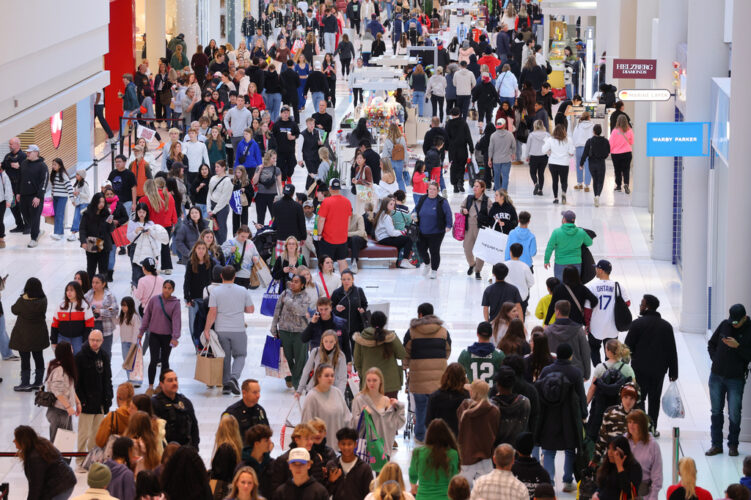US retailers watch Black Friday traffic for a hoped-for holiday halo effec

Shoppers browse through stores at Mall of America for Black Friday deals, Friday, Nov. 28, 2025, in Bloomington, Minn. (AP Photo/Adam Bettcher)
NEW YORK (AP) — Black Friday no longer tempts people to leave Thanksgiving tables for midnight mall runs, but the annual sales event still brings more shoppers into stores than any day of the year and rules as the U.S. retail industry’s unofficial start of the holiday shopping season.
This year’s kickoff arrived as consumer confidence in the U.S. economy fell this month in the aftermath of the federal government shutdown, weak hiring and stubborn inflation, according to a report The Conference Board issued Tuesday.
Despite the economic uncertainty, shoppers went hunting Friday morning for the deals that retailers traditionally have reserved for the day after Thanksgiving.
At Macy’s Herald Square flagship store in New York City, customers who streamed in soon after the store opened at 6 a.m. found for deep discounts on clothes, shoes, linens and cosmetics. The footwear department had products selling for 40% to 50%.
Nicholas Menasche, 19, from Queens, New York, shopped with his mother for shoes and clothing, and planned to head next to Best Buy for video games. Menasche, an intern at a bank, said he expected to spend around $1,200 this year on his holiday shopping, roughly the same amount as last year.
“It’s a great tradition,” he said. “The stores are open really early.”
Veronica Nam, 68, headed to the shoe department to buy Nike sneakers for her husband after spending $256 on Lacoste bedding that she estimated cost half the regular price.
Nam said she thought Black Friday had the best holiday deals but that she would wait until after Christmas to finish buying gifts for other relatives. She said it was hard to know when to find the best prices given the unpredictability of President Donald Trump ‘s wide-ranging tariffs on imported goods and several years of inflation.
“Food is very expensive,” she said.
Many retail executives have reported customers becoming more discerning and increasingly focused on deals while at the same time remaining willing to splash out for important occasions like the start of the school year and the winter holidays, creating a halo effect.
“Consumers have been saying the economy is terrible while continuing to spend for years now, so the outlook is probably better than they are telling us,” Bill Adams, the chief economist at Comerica Bank, said this week of shoppers’ moods heading into Black Friday.
While planning for the holidays in the spring and summer, retail companies were wrestling with the Trump administration’s volatile tariff policies. Many accelerated shipments of some merchandise before the tariffs took effect or decided to absorb some of the import tax costs instead of raising prices for customers.
Market research firm Circana said that 40% of all general merchandise sold in September saw a price increase of at least 5% compared with the first four months of the year. Toys, baby products, housewares, and team sports equipment were among the hardest hit categories.
Still, analysts and mall executives cited solid momentum heading into Black Friday week. At the Mall of America in Bloomington, Minnesota, foot traffic in recent weeks surpassed the numbers from pre-pandemic 2019, said Jill Renslow, the mall’s chief business development and marketing officer.
“We’re seeing a very positive start to the holiday season,” Renslow said. “The last few Saturdays in November have been very strong.”
The growth in online sales also has been robust so far. From Nov. 1 to Nov. 23, U.S. consumers spent $79.7 billion, or 7.5% more than a year earlier, according to web tracking and analysis platform Adobe Analytics. They spent another $6.4 billion online on Thanksgiving Day, a 5.3% increase over last year, while taking advantage of better than expected deals, the firm said.
“Clearly, there’s uncertainty,” Mastercard Chief Economist Michelle Meyer said. “Clearly, consumers feel on edge. But at the moment, it doesn’t seem like it’s changing how they are showing up for this season.”
According to Adobe Analytics, Thanksgiving Day was the best time to shop online to get the deepest discount on sporting goods, but Black Friday is the best time to buy TVs, toys and appliances online. Cyber Monday, however, should be the best time to buy apparel and computers.
